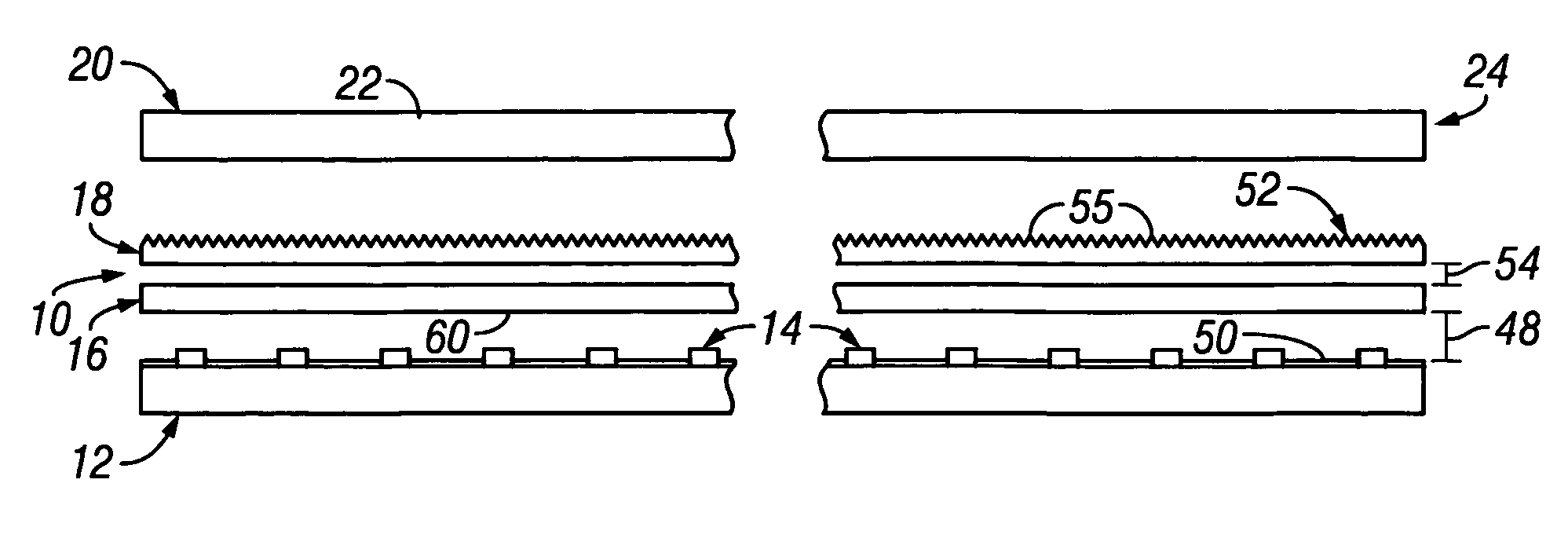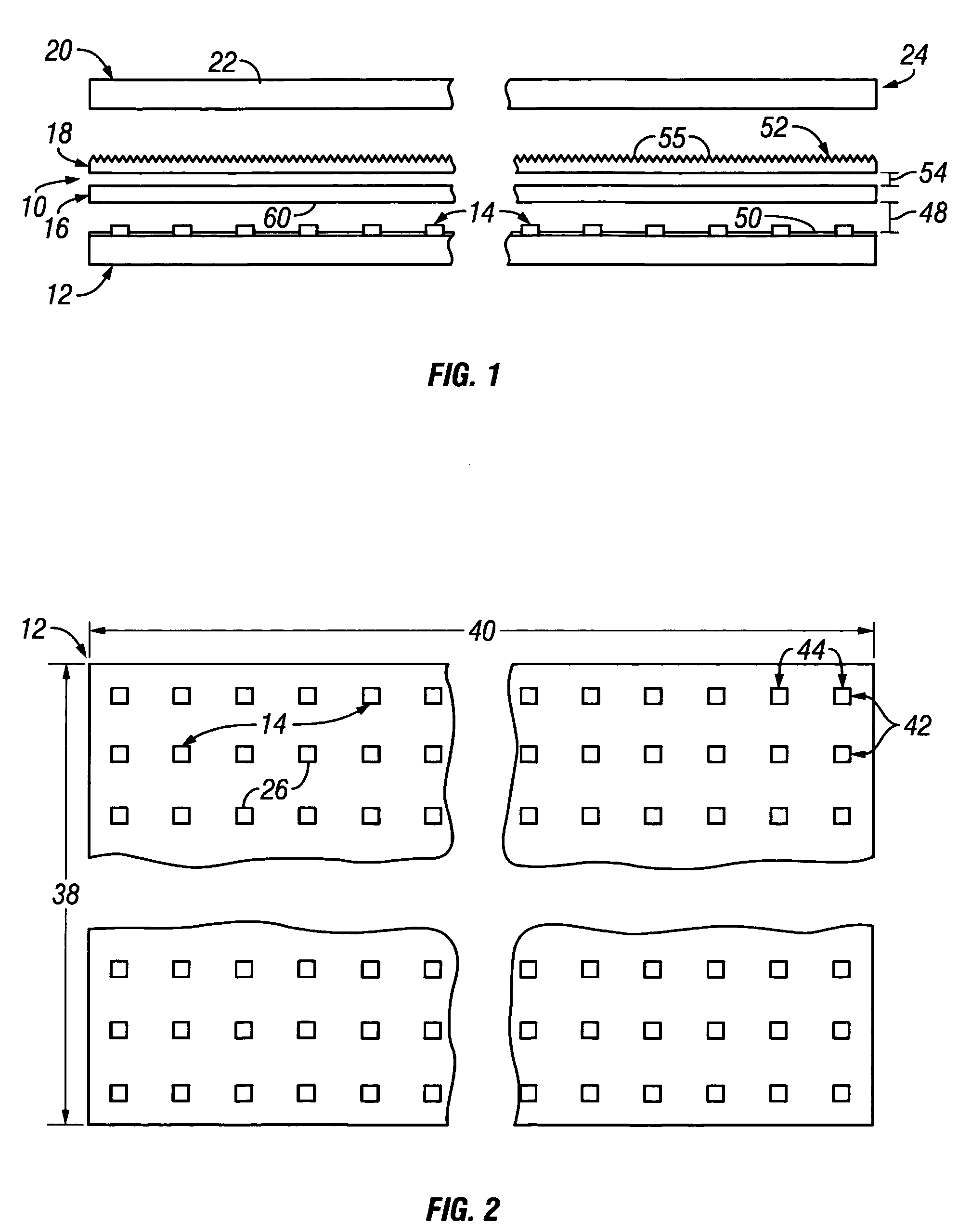Light emitting panel
a technology of light emitting panels and light sources, applied in the direction of lighting and heating apparatus, measurement apparatus components, applications, etc., can solve the problems of poor color rendition, ccfl and electro-luminescent and edge-lit light emitting panels are not without their drawbacks
- Summary
- Abstract
- Description
- Claims
- Application Information
AI Technical Summary
Benefits of technology
Problems solved by technology
Method used
Image
Examples
Embodiment Construction
[0015] An exemplary light emitting panel 10 is shown in FIGS. 1 and 2 and may comprise a base panel 12 having a plurality of light emitting elements 14 thereon. As will be described in greater detail below, each of the light emitting elements 14 produces an illumination pattern 46 that comprises a region 28 of substantially uniform intensity that extends over a large radiation angle (e.g., at least about 60°, and typically at least about 100°). See FIG. 4. One or more light conditioners 16, 18 are positioned adjacent the base panel to receive and condition light produced by the various light emitting elements 14. The light conditioners may comprise a diffuser 16 that is positioned adjacent the base panel 12 so that the diffuser 16 receives and diffuses light produced by the various light emitting elements 14 provided on the base panel 12, and a brightness enhancer 18 that is positioned adjacent the diffuser 16. The brightness enhancer 18 collects diffused light from the diffuser 16 ...
PUM
 Login to View More
Login to View More Abstract
Description
Claims
Application Information
 Login to View More
Login to View More - R&D
- Intellectual Property
- Life Sciences
- Materials
- Tech Scout
- Unparalleled Data Quality
- Higher Quality Content
- 60% Fewer Hallucinations
Browse by: Latest US Patents, China's latest patents, Technical Efficacy Thesaurus, Application Domain, Technology Topic, Popular Technical Reports.
© 2025 PatSnap. All rights reserved.Legal|Privacy policy|Modern Slavery Act Transparency Statement|Sitemap|About US| Contact US: help@patsnap.com



